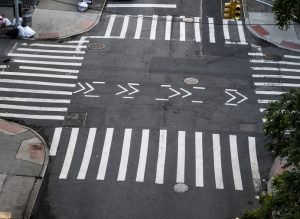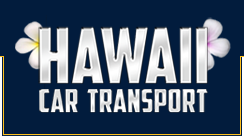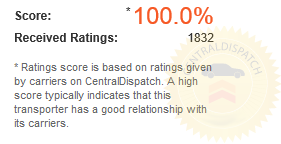The right of the way
Safety
Conclusion

The right of the way
There are many intersections throughout the islands of Hawaii that allow traffic to flow in four different directions. Fortunately, many of these intersections have traffic lights, so beyond slowing down at a yellow light and stopping at a red light, there really will not be much else for you to remember. However, four-way intersections in Hawaii get a lot more complicated when the traffic lights are not working or when there are stop signs instead of a traffic light.
In either of these situations, “the right of way” can play a very big role in everyone’s ability to safely travel through the intersection in an efficient manner. When you see that a traffic light is either off completely or just the yellow lights are blinking, you should treat this as if it were a four-way intersection with only stop signs.
That means all you need to know will be how to navigate a four-way intersection with stop signs in all directions using “the right of way.” This method basically stipulates that all drivers arriving at an intersection should continue forward only in the order in which they arrived at that intersection. However, in Hawaii, “the right of way” is a bit different than it is in other states.
The “right of way” in Hawaii stipulates the following when at a four-way intersection:
- If there are stop signs in only two directions, the directions without stop signs always have the right of way because they are not required to stop at all.
- If there are stop signs in all four directions, the drivers should only continue forward in the order that they arrived at the intersection. For example, if cars A, B, C, and D arrive in the following order (with the vehicle listed first having arrived at the intersection first), B-C-A-D, then car B gets to continue forward through the intersection first, car C has the right to go second and so on.
- If you happen to be in the rare circumstance where you and another car arrive at an intersection at the same exact time and are traveling in perpendicular directions, there is a simple solution. Hawaiian law stipulates that the driver to the left always yield the right of way to the driver on the right.
Safety
Safety will also be crucial when you travel through any four-way intersections, especially when it is an intersection where not all sides have stop signs. There are different safety measures to be taken at each different type of four-way intersection.
- Four-way intersections with traffic lights – These always tend to be the safest intersections. That is because right of way is always determined by the traffic lights rather than the combined will of everyone at the intersection. However, you still need to take basic precautions such as checking quickly in both directions prior to traveling through the intersection, maintaining a safe speed (even if that means “missing” the light), and watching for cars in the opposite lane of traffic that are making left-hand turns.
- Four-way intersections with stop signs in all directions – When you have stop signs in all four directions, it is safer than if there were just stop signs in two directions, but things can become unsafe quickly if just one driver chooses to ignore the right of way. When you arrive at a stop sign at one of these intersections, it is imperative that you:
- Make a complete stop at the stop sign which means the wheels of your car must stop turning completely and you must remain stopped long enough for you to check in all directions. Be sure that you remain stopped for at least three full seconds.
- Check in all directions to see if there are other drivers at the intersection. If there are and they arrived before you did or at the exact same time and are to your right, wait until they have continued forward and have cleared the intersection completely. You also must check to see if there are nearby pedestrians that are about to cross in front of your vehicle. Always allow pedestrians to proceed before you do.
- When you finally start to proceed through the intersection, stay focused and if another driver starts driving through the intersection before it was their turn, do not try to beat them through the intersection. Just let them go and continue on your way.
- Four-way intersections with stop signs in only two directions – These are the most dangerous four-way intersections by a long shot. This is because drivers in two directions of the four will not even have to slow down at all when proceeding through the intersection. This means when you arrive at a stop sign at a four-way intersection and that stop sign does not indicate that there are stop signs in all directions with the words “All Ways”, you must exercise the highest level of caution possible. You should make your complete stop at the stop sign and check in both directions as you normally do. If there are cars coming from the directions perpendicular without stop signs, be sure that they are far enough away for you to continue through the intersection prior to doing so.
Conclusion
Four-way intersections can be both aggressive and dangerous, especially in busy areas like Honolulu. However, exercising the most complete and utmost caution will end up yielding the best results. Not only can driving haphazardly or aggressively through a four-way intersection cause an accident but it can lead to road rage. All four-way intersections require extreme caution when you are travelling through them but some are more dangerous than others. Always check in both directions before proceeding, give the right of way to drivers that arrived at the intersection before you did, and always make complete stops when required by traffic lights or stop signs.


